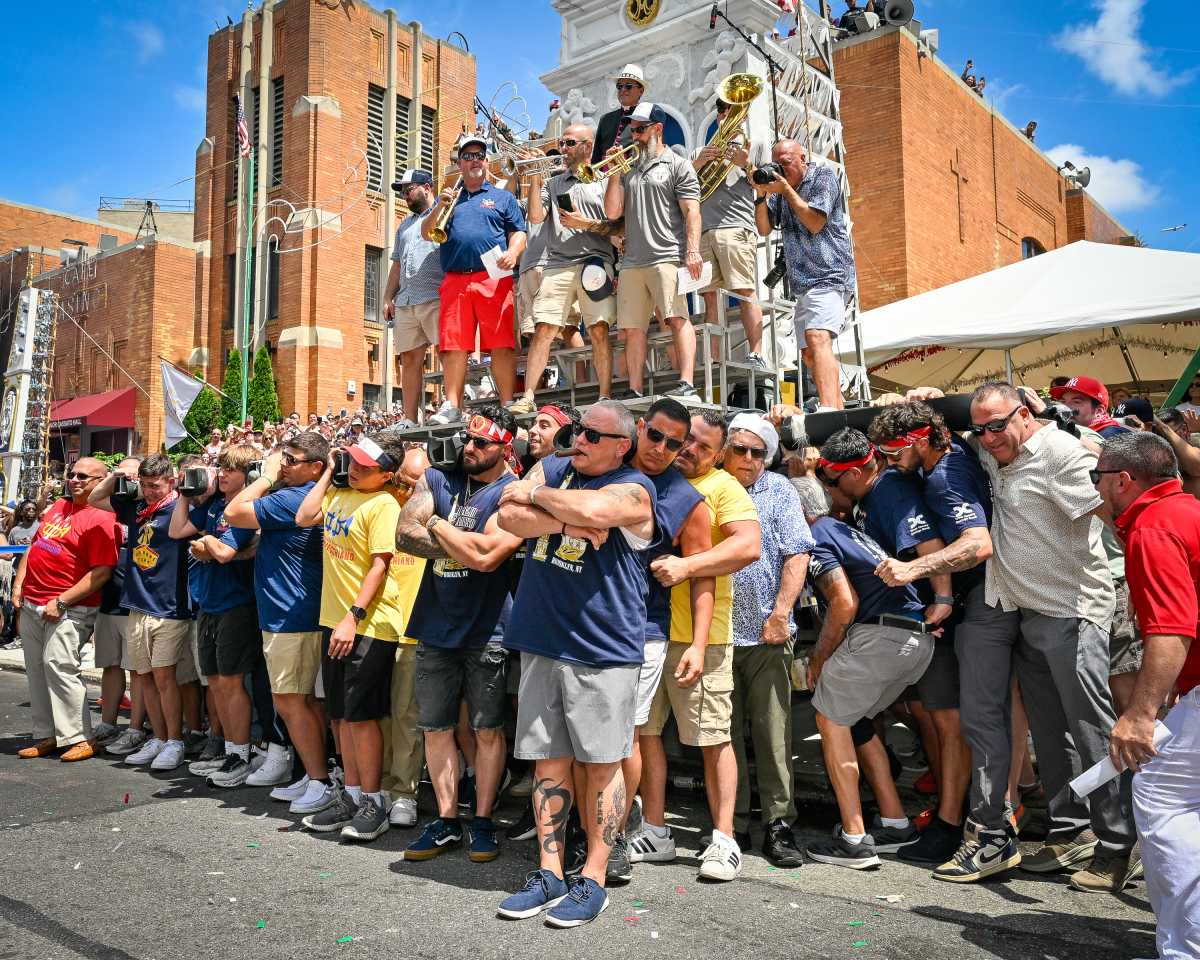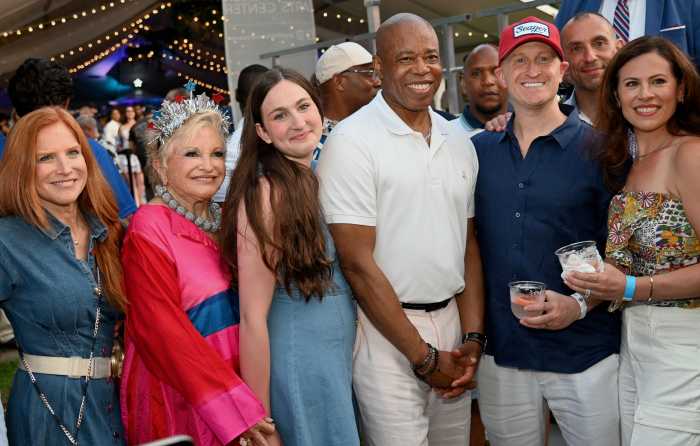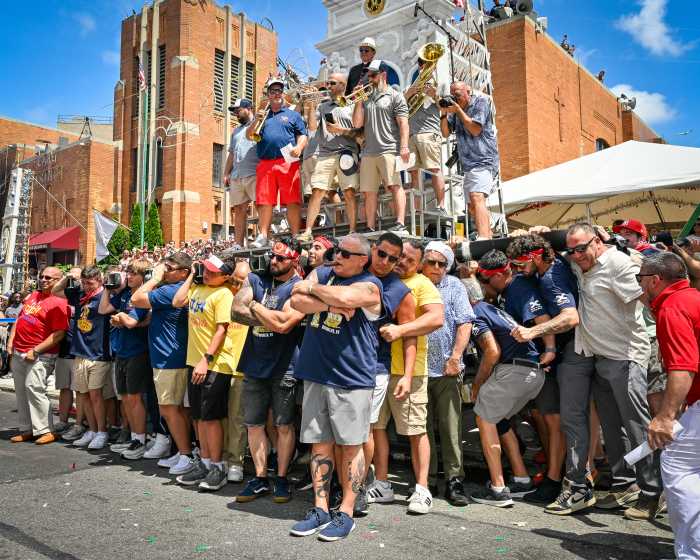By Tyler Pray
The hallways of the Sol Goldman 14th St. Y bustle with babies in strollers, moms, giant hula-hoops, elaborate dresses, senior citizens carrying exercise equipment and dozens of other visitors. Children dash between playrooms while the thump of ethnic drums escapes into the hallway and mingles with the chatter of voices young and old. Staff members move from room to room, occasionally stopping in their cramped, temporary offices as they direct the organized chaos. Somehow, some of the busiest people in New York City managed to make time to collaborate with the Federation of East Village Artists to create the East Village Arts Lab, which recently began offering a variety of arts classes to the East Village community.
FEVA, formed in 2002, puts on the annual HOWL! festival, but wants to do something more long-term for the neighborhood. The collaboration with the Y “gives FEVA the opportunity to do something that is enriching to the community that can go year-round,” said Greg Fuchs, the managing director of FEVA. “The Lower East Side has always been fertile ground for arts, which FEVA honors and celebrates.”
The collaboration benefits the Y, also. “Working with FEVA is an amazing opportunity for us to outreach into the community,” said Susan Lyddon. “It allows us to offer more programming to the community by putting us in touch with the artists we need to teach the classes.”
The Y offered the infrastructure and space for FEVA’s community dreams, and FEVA offered the connections with artists and teachers for the Y’s expanding programs.
FEVA seeks to preserve the artistic legacy of the East Village by “promoting opportunities for the next generation of visionaries to flourish,” according to their mission statement. The Y offers a place for FEVA artists to meet with children from the community.
Tony Corsano, a musician and member of Drumkraft, teaches the children’s drumming class. He’s got four kids in the class, but that doesn’t include the brothers and sisters, caretakers, moms and dads attending the class, helping the kids make drums out of plastic buckets by adorning them with sticky paper and colorful tape.
“Everybody look out the window, please,” Corsano asked his students. “That is New York. This is where we live, New York City.” Corsano had cutout pictures of the Statue of Liberty, the state bird, a tree and flower, a map of New York, pictures of landmarks and little paragraphs of New York history that he asked the children to stick onto their drums.
“I made my drum,” Eli responded as he began beating the top of it.
Maya, a more timid student, shied away from the activity and began to cry. Corsano sat down with her and helped her decorate her drum, telling her, “You’re going to have fun in this class, because you are going to learn to play drums. Drumming is very important, because you make music.” After they got her drum started, she smiled.
The class ended with a group exercise. Everyone gathered in a circle and repeated the drumming pattern Corsano demonstrated for them. “Next time we’re going make the drumsticks, then we’re going to make marching band drums and march around,” Corsano told them as they picked up the room.
“[The class],” said Corsano, “promotes art by giving the kids an introduction to a set of personal and social skills that are necessary for any art endeavor, such as listening, cooperation, counting, math, motor skills, self confidence when they have to perform on the spot, and internal rhythm, which is a wonderful thing to have in life. Each student gets to make an instrument, which gives them a sense of ingenuity and resourcefulness. They get to participate in an organized drum ensemble, which is a group effort. It translates into the same effort to function in a community.”
Although EVAL began primarily as an after-school arts program for children, it soon blossomed into a number of programs for adults as well. “If parents aren’t involved, what kind of role model are they being?” asked Alyssa Abrahamson, director of adult arts programs at the Y.
“You can be 45 or 50 and be a novice and start something new,” added Fuchs.
The adult drumming class is a very intellectual experience. Bill Buchen, a FEVA member who has, along with his wife, created a number of sound-architecture spaces throughout the city, teaches the class.
“It’s all political. We consume too much and don’t create enough. This is getting out of consumerism and into creations,” Buchen said regarding his class. The students, including a music teacher, brought their own drums to class, drums they felt inspired to go out and find on their own after previous classes. Gathered in a children’s playroom, sitting in tiny chairs, they looked at drums from around the world, played them, and talked about how the heartbeat is related to drumming.
Then they had a conversation — with their drums. They used their drums to emulate the sound of the drums’ names. “Think of your takas, your nakas, the conga…start to sing, work on your lingo. Say it, please.” And they answered with their drums, mixing short snaps with deep, resounding hits. “Kinto.” Tang-snap.
“They are becoming more fluent as drummers,” Buchen said. “The group is nurturing. Hopefully they go home and play music instead of watching TV. I’m sure they do, these people are very sophisticated.”
Downstairs, in the Y’s gymnasium, another group of adults swung hula-hoops around their hips, necks and arms. Stefan Pildes of Groovehoopalition, New York City’s premiere Groovehoops dance team and artists collective, instructs the class how to “feel the beat of the music in their bodies while hula-hooping.”
“Everything on my mind before class just disappears,” said a class member afterwards. “Hula-hooping is a total art form,” said Pildes, who got inspired to perform and teach “hooping” when he saw a girl “hooping in perfect time to the music” at a concert. He started leading masses of people in Central Park in learning how to hula-hoop with style before bringing his talents to the Y.
EVAL offers several more classes from fire twirling to a community knitting circle. They plan on starting a generational drumming class for children, parents and grandchildren together, and possibly jump-roping to punk music. They are also working on a future masters series, which would bring in artists with long-standing careers to talk, perform, lecture and anything else to promote the arts. Poet Ann Waldman has already agreed to be a guest.
“It’s very cutting edge, very East Village,” Lyddon said of their new class ideas. “It’s just really fun in a community center. We have sports, wellness and now the arts, for babies to seniors.”
Ed Woodham, director of school-age programs at the Y, has a vision for EVAL. “It reflects the diversity of the East Village Community,” he said. “We want it to become an East Village institution. When people are looking for a place to take art classes, whether it be children or adults, we want EVAL to be the place that they come.”
Currently five adult and five children’s classes are being offered, but the hope is to have seven classes for adults and 10 for children. Classes meet Wednesdays and Thursdays, adults in the evening and children during the afternoon. Class cost ranges from $85-$160 for adults for six to 10 sessions, with discounts for members. Children’s classes cost from $275-$300 for 15-16 sessions. Cost for single-session classes is $12-$30. For more information about East Village Arts Lab at the Sol Goldman Y at 344 E. 14th St., call 212-780-0800 or visit the Web site: www.howlfestival.com/feva/eval.html.
Also Read: https://www.amny.com/news/stadium-foes-fear-m-t-a-will-get-railroaded-by-jets/







































